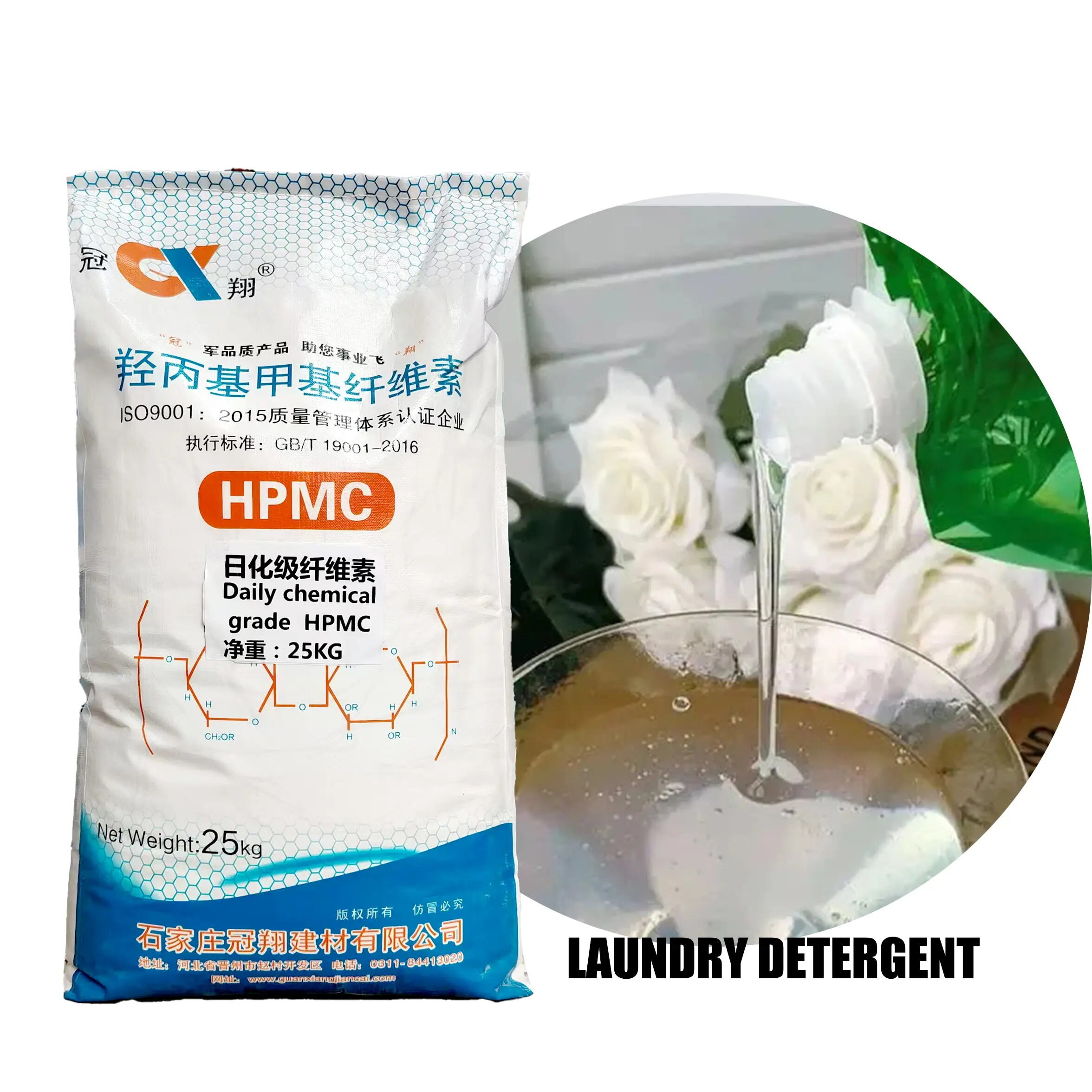Key Chemical Properties of Hydroxypropyl Methylcellulose
Water Retention Capabilities in Material Science
Hydroxypropyl Methylcellulose, commonly known as HPMC, stands out because of how well it holds onto water. This makes it really important stuff in construction projects and even in making medicines. The way HPMC is built means it grabs onto moisture inside whatever material system it's part of. This helps keep things hydrated longer than they would otherwise be. When builders mix cement with HPMC, the whole mixture becomes easier to work with during application. Research shows adding HPMC to these mixes actually improves hydration rates somewhere around 20 to 30 percent. That means structures stay stronger for longer periods after being put together, which obviously matters a lot when building anything that needs to last decades.
Thermogelling Behavior for Controlled Release
What makes HPMC stand out is how it changes form when heated, which really helps in making controlled release medications work better. When temperatures rise above body heat levels around 37°C, this substance turns from liquid into a gel consistency. That transformation lets medicines get released slowly over time rather than all at once. Studies have actually found that some specially formulated HPMC gels can boost drug absorption rates by as much as half compared to regular pills or capsules. Because it works so well across different ways of delivering medication, many researchers see HPMC as something pretty important for advancing modern medicine practices.
Enhancing Construction Material Performance
Improving Mortar Workability and Crack Resistance
Adding Hydroxypropyl Methylcellulose, or HPMC for short, really makes a difference in how well mortar works during construction projects. When builders mix HPMC into their mortar, they find it much easier to apply and shape while working at job sites, which saves time overall. What's interesting about HPMC is how it holds onto water better than regular mortar does. This helps prevent cracks because the material cures properly without shrinking too much, something that often causes problems later on. Research across different construction projects shows that mortars with HPMC tend to be about 40% stronger when bent or stressed compared to traditional formulas. The combination of easier handling right after mixing and lasting strength over years means most contractors now consider HPMC essential for any serious building work these days.
Optimizing Cement Hydration Processes
Hydroxypropyl Methylcellulose (HPMC) makes a real difference when it comes to how cement hydrates properly. Mixes containing HPMC help control where water goes and how available it stays throughout the important curing period. What we see at the end are tighter microstructures inside the material, which means better overall strength characteristics. Tests across the industry show that adding HPMC to mixes can boost compressive strength up around 25% after those standard 28 day cure times. The stronger the material gets under pressure, the longer these structures tend to last without issues. Beyond just making things stronger right away, this kind of optimization actually helps reduce maintenance costs down the road for many construction projects. Contractors working on everything from small homes to major highways find that including HPMC in their mixes consistently leads to better results than traditional approaches.
Pharmaceutical Applications of HPMC
Sustained Drug Release in Tablet Formulations
Hydroxypropyl methylcellulose (HPMC) has become quite common as an additive in making tablets, helping drugs stay effective longer after they're taken. When it meets the fluids in our stomach and intestines, HPMC creates a kind of protective layer around the medicine inside. This means the actual drug gets released slowly into the body instead of all at once, so it works where it needs to for much longer. Research shows that when manufacturers include HPMC in their formulations, some tablets can keep working for as long as 12 whole hours straight. That makes a big difference for patients who need to take their medicine regularly throughout the day. For certain types of medications like those treating high blood pressure or chronic pain conditions, this slow release helps keep the right amount of drug circulating in the bloodstream consistently without peaks and valleys.
Stabilizing Topical Creams and Ointments
When making creams and ointments, hydroxypropyl methylcellulose (HPMC) serves as a stabilizer that really makes a difference in how these products feel and hold together. What's interesting is that HPMC creates this protective gel layer on top of skin applications, which means better stability overall and easier spreading across surfaces. Most people love this because it applies smoothly without leaving any sticky residue behind. Another benefit worth mentioning is how evenly distributed the actual medicine becomes throughout the product when using HPMC. This even distribution actually helps the medication work better over time. According to industry reports, around 30% more customers report being satisfied with products that include HPMC simply because of those texture improvements. So while HPMC definitely addresses medical requirements, it also gives consumers something extra special – a pleasant experience during application that keeps them coming back for more.
Role in Food Industry Innovation
Texture Modification in Low-Fat Products
When it comes to innovating in the food industry, Hydroxypropyl Methylcellulose or HPMC makes a big difference in how low fat products feel in the mouth. This ingredient works great as both an emulsifier and thickener, helping manufacturers create foods that taste rich and look good just like their full fat counterparts but still keep all those healthy benefits intact. Food companies have been using HPMC for years because it lets them make products people actually enjoy eating instead of feeling guilty about skipping the butter or cream. Some studies indicate adding HPMC cuts down calories by around 20 percent without making everything dry or rubbery. That means consumers get what they want from their meals nutritionally while still getting that familiar satisfying bite we associate with traditional recipes.
Extending Shelf Life Through Film-Forming
The film forming qualities of HPMC represent a major breakthrough for keeping perishable foods fresh longer. When applied, it forms protective barriers that really cut down on moisture loss while keeping things fresh. Bakers especially love this feature because it helps maintain that just-out-of-the-oven texture for much longer periods, slowing down the dreaded staling process we all know too well. Research from various food labs suggests products treated with HPMC tend to last around 25% longer than regular ones, though results can vary depending on storage conditions. Beyond simply preventing waste, this extended shelf life means manufacturers get more bang for their buck when transporting and selling products, since items stay saleable in stores for longer durations without losing quality.
Industrial Coating Advancements with HPMC
Preventing Pigment Settlement in Paints
Hydroxypropyl Methylcellulose, often called HPMC, plays a key role in industrial coatings by stopping pigments from settling at the bottom of paint containers. When pigments settle unevenly, the paint doesn't perform consistently across different batches. Painters know this matters because walls end up looking patchy if the color isn't distributed properly. The ability to keep pigments suspended makes a big difference in how long painted surfaces last without fading or developing streaks. Research indicates that adding HPMC to paint mixtures can cut down on color settling by around 15% compared to standard formulations. That might not sound like much, but in commercial settings where large areas need uniform coverage, this improvement means surfaces stay looking fresh and professional for months rather than weeks.
Enhancing Adhesion on Non-Porous Surfaces
HPMC significantly improves how coatings stick to non-porous surfaces. This property makes it especially useful across different materials like metal and plastic surfaces commonly found in manufacturing settings. What makes HPMC stand out is its ability to control coating thickness during application, which leads to smoother finishes and easier spreading over complex shapes. According to industry data from recent studies, coatings containing HPMC generally show around 15-20% stronger bonding strength on these difficult-to-coat materials. Better adhesion means coatings last longer without peeling or flaking, even under harsh environmental conditions. Many manufacturers have reported noticeable improvements in product lifespan after incorporating HPMC into their formulation process.

Sustainable Product Development
Biodegradable Alternatives to Synthetic Polymers
Hydroxypropyl Methylcellulose or HPMC for short is gaining ground as a green substitute for those synthetic plastics we all know are bad for the planet because it breaks down naturally over time. While most synthetics just pile up in landfills and oceans, HPMC comes straight from plants which means it leaves behind way less damage to our ecosystems. What makes this stuff really stand out is how completely it disappears after use across different industries, something that's becoming increasingly important as companies look for greener options. Research published lately shows HPMC actually helps cut down on plastic waste problems, making it a smart choice for manufacturers wanting to create products that won't stick around forever once they're thrown away.
Reducing Carbon Footprint in Manufacturing
Using HPMC during manufacturing helps cut down on carbon emissions and fits right in with what the world is trying to achieve for sustainability. When manufacturers switch to HPMC, they actually run their operations better, which means less energy gets used overall and the carbon footprint shrinks as well. Industry reports show that companies making the move to HPMC formulas typically see greenhouse gas reductions somewhere between 30% and 50% when compared against old school materials. These kinds of cuts matter a lot for protecting our environment while also helping businesses stay compliant with those ever tightening regulations around climate change that keep getting updated every year.
Frequently Asked Questions
What is Hydroxypropyl Methylcellulose (HPMC) used for?
Hydroxypropyl Methylcellulose is used in various industries, including construction, pharmaceuticals, food, and industrial coatings, for its unique chemical properties such as water retention, thermogelling behavior, texture modification, and adhesion enhancement.
How does HPMC improve mortar workability?
HPMC improves mortar workability by enhancing its water retention capabilities, allowing easier application and manipulation on-site, and contributing to better crack resistance.
Can HPMC be considered an environmentally friendly material?
Yes, HPMC is considered an environmentally friendly material because it is plant-based and biodegradable, thereby reducing ecological footprint compared to synthetic polymers.
How does HPMC contribute to the pharmaceutical industry?
In the pharmaceutical industry, HPMC is used to facilitate sustained drug release in tablet formulations and to stabilize topical creams and ointments, improving therapeutic efficacy and product texture.
Why is HPMC utilized in the food industry?
HPMC is used in the food industry for texture modification in low-fat products and extending shelf life through its film-forming properties, enhancing consumer satisfaction and reducing food waste.
 EN
EN
 AR
AR
 CS
CS
 DA
DA
 NL
NL
 FI
FI
 FR
FR
 DE
DE
 EL
EL
 HI
HI
 IT
IT
 JA
JA
 KO
KO
 NO
NO
 PL
PL
 PT
PT
 RO
RO
 RU
RU
 ES
ES
 SV
SV
 IW
IW
 ID
ID
 SR
SR
 SK
SK
 UK
UK
 VI
VI
 HU
HU
 TH
TH
 TR
TR
 AF
AF
 MS
MS
 CY
CY
 IS
IS
 BN
BN
 LO
LO
 LA
LA
 NE
NE
 MY
MY
 KK
KK
 UZ
UZ


